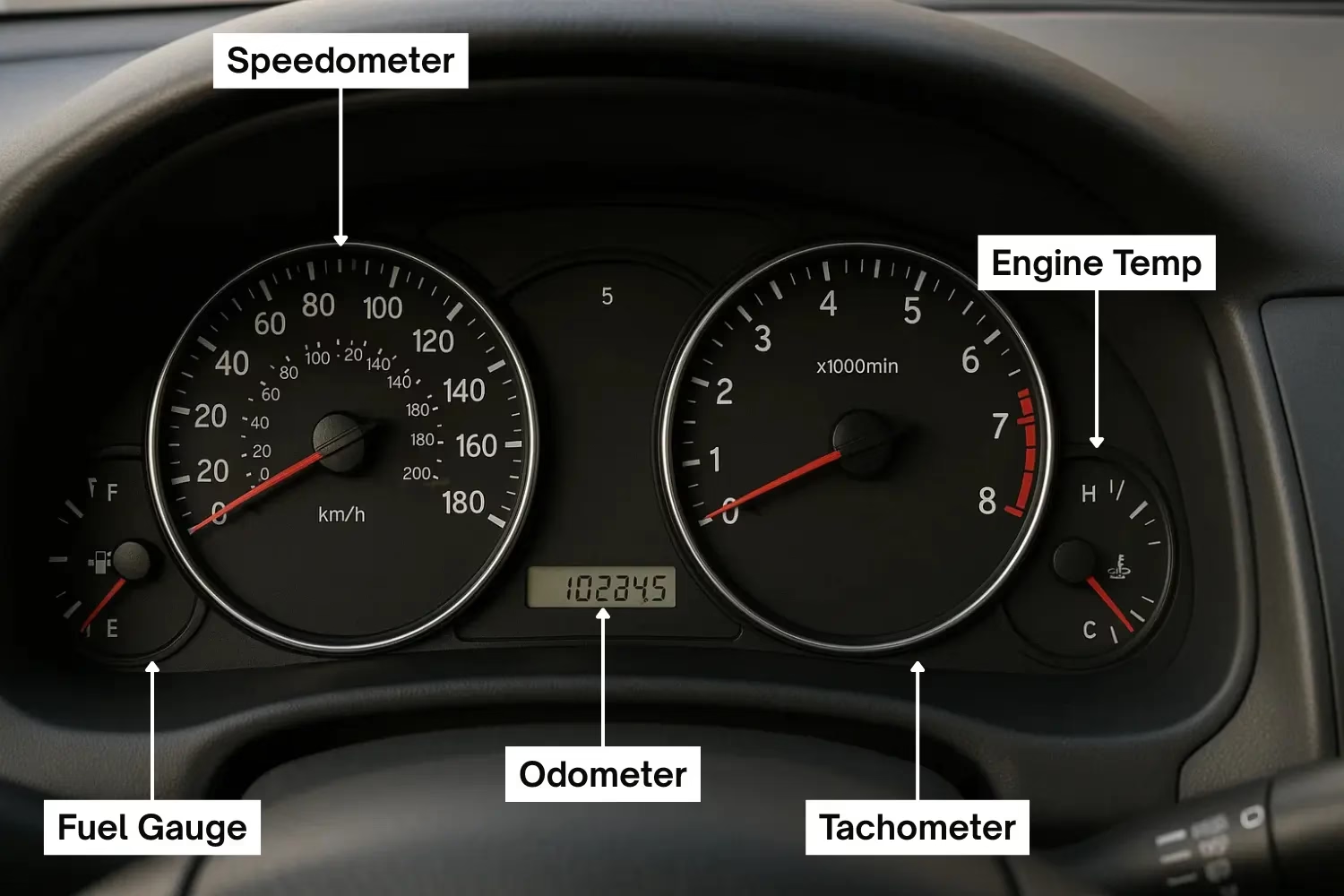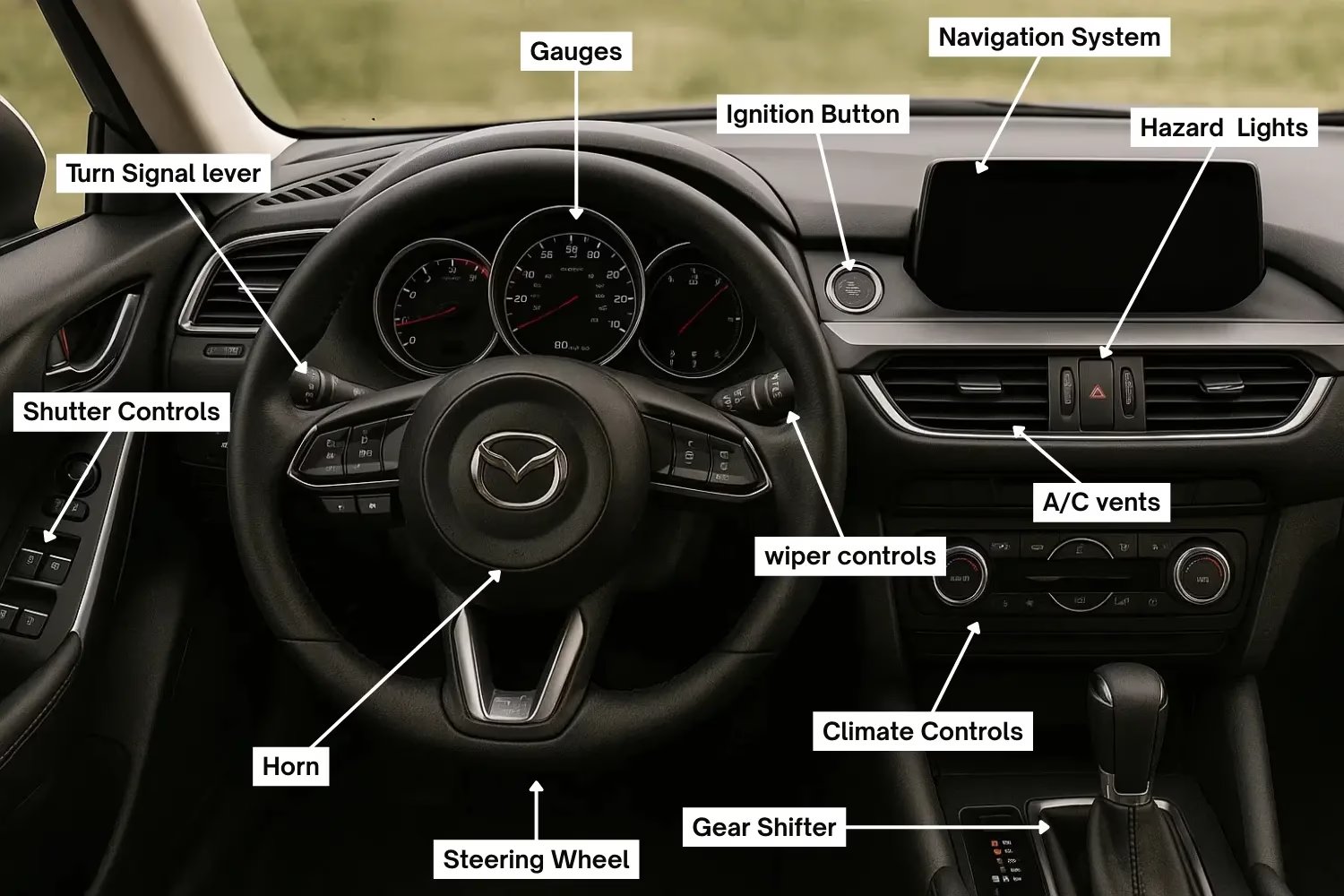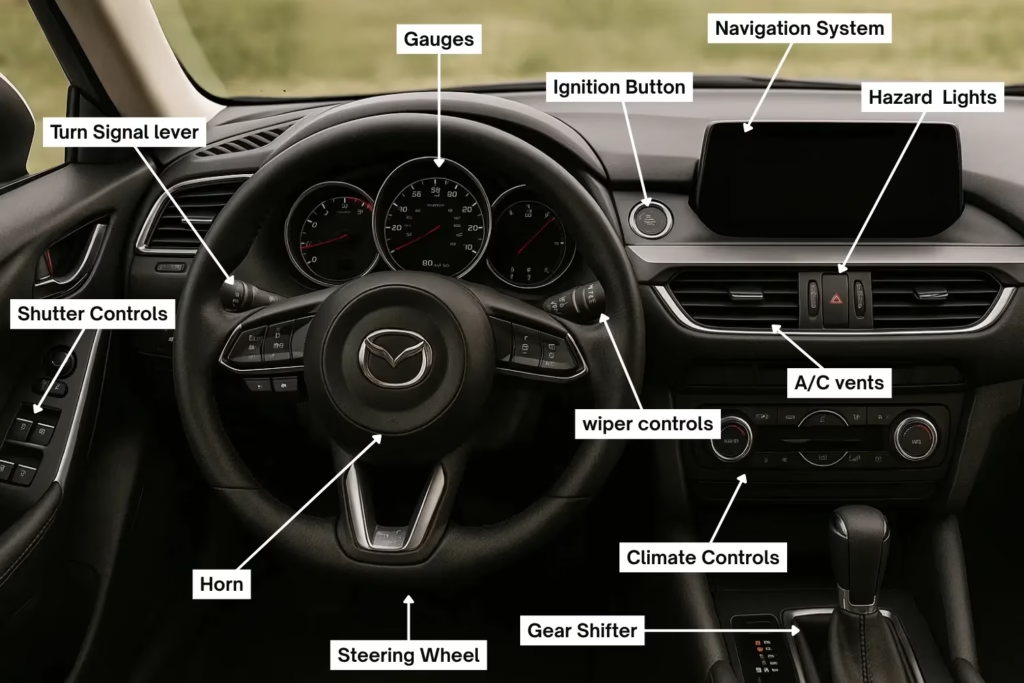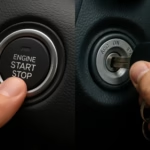When you sit behind the wheel of a car, the number of buttons, lights, and gauges can feel overwhelming. Don’t worry once you understand what each part of the dashboard does, driving becomes safer and much more comfortable.
In this guide, we’ll walk through the car dashboard controls, explain the common dashboard warning lights, and show you how to read the most important gauges. If you are new to driving, think of this as your step-by-step map to understanding your car’s “control center.”
Why the Dashboard Is Important
The dashboard is not just a collection of lights and meters—it’s your car’s main communication tool. It tells you:
How fast you’re going
How much fuel you have left
If something is wrong with the engine or brakes
Which features are currently on, like headlights or air conditioning
In other words, the dashboard keeps you informed about both safety and comfort.
Main Dashboard Instruments

1. Speedometer
The speedometer shows how fast your car is moving. In most cars, speed is displayed in kilometers per hour (km/h) or miles per hour (mph).
2. Tachometer
The tachometer measures how fast the engine is running in revolutions per minute (RPM). While automatic car drivers don’t look at it often, manual drivers use it to know the best time to shift gears.
3. Fuel Gauge
This one tells you how much fuel is left in the tank. A small arrow near the fuel symbol often shows which side your fuel cap is on. Handy if you are at a new gas station!
4. Engine Temperature Gauge
Cars need to operate within a safe temperature range. This gauge shows if the engine is too hot (overheating).
5. Odometer
The odometer shows how many kilometers or miles the car has traveled. Some dashboards also have a trip meter, which you can reset to measure the distance of a journey.
Understanding Dashboard Warning Lights

The dashboard also has many symbols that light up to give you warnings. Here are the most common ones:
- Check Engine Light – Can mean many things, from a loose gas cap to engine trouble. Don’t ignore it.
- Oil Pressure Warning – Low oil pressure; stop and check oil immediately.
- Battery Warning – The battery is not charging properly.
- Brake System Warning – Could mean low brake fluid or a serious brake problem.
- ABS Light – Problem with anti-lock braking system.
- Seatbelt Reminder – Someone in the car is not wearing their seatbelt.
- Airbag Warning – Airbag may not deploy correctly in a crash.
👉 Learning these dashboard symbols explained can save you from accidents and expensive repairs.
Common Dashboard Controls and Buttons

Apart from warning lights and gauges, modern dashboards also have many buttons. Here are some you’ll often see:
Headlight Control – To switch between normal, high beam, and sometimes fog lights.
Hazard Light Button – Red triangle button; use in emergencies to warn others.
Windshield Wiper Control – Adjusts wiper speed and washer fluid spray.
Air Conditioning and Heater Controls – For comfort inside the car.
Defrost Button – Clears fog or ice from your windshield and rear window.
Steering Wheel Buttons – Often control audio, cruise control, or phone calls in modern cars.
Analog vs Digital Dashboards
Older cars have analog dashboards with physical dials and buttons. Newer cars are moving to digital dashboards with screens and touch controls.
Analog dashboards are simple and easy to read.
Digital dashboards offer customization (like GPS maps and media), but they can be distracting.
👉 Safety experts are now encouraging car brands to bring back physical buttons because they are easier to use while driving.
Why You Must Learn the Dashboard
Many new drivers ignore the dashboard until a light pops up. This is risky. Knowing your dashboard helps you:
React quickly to car problems
Drive within safe speed and temperature limits
Avoid expensive repairs
Stay comfortable on long drives
Final Thoughts
Your car’s dashboard is more than just lights and dials—it’s your car’s voice. By learning what each control and symbol means, you’ll drive more safely, protect your car’s health, and feel more confident behind the wheel.
Whether you’re a complete beginner or just brushing up on knowledge, take a few minutes to sit in your car and explore your dashboard. With practice, these symbols and controls will become second nature, and driving will feel much less stressful.
Discover more from SMOOTHSTEERING
Subscribe to get the latest posts sent to your email.




Pingback: Basic Clutch Control for Beginners (Manual Cars)
Pingback: How to Move Off and Stop Safely (Learner Driver Guide)